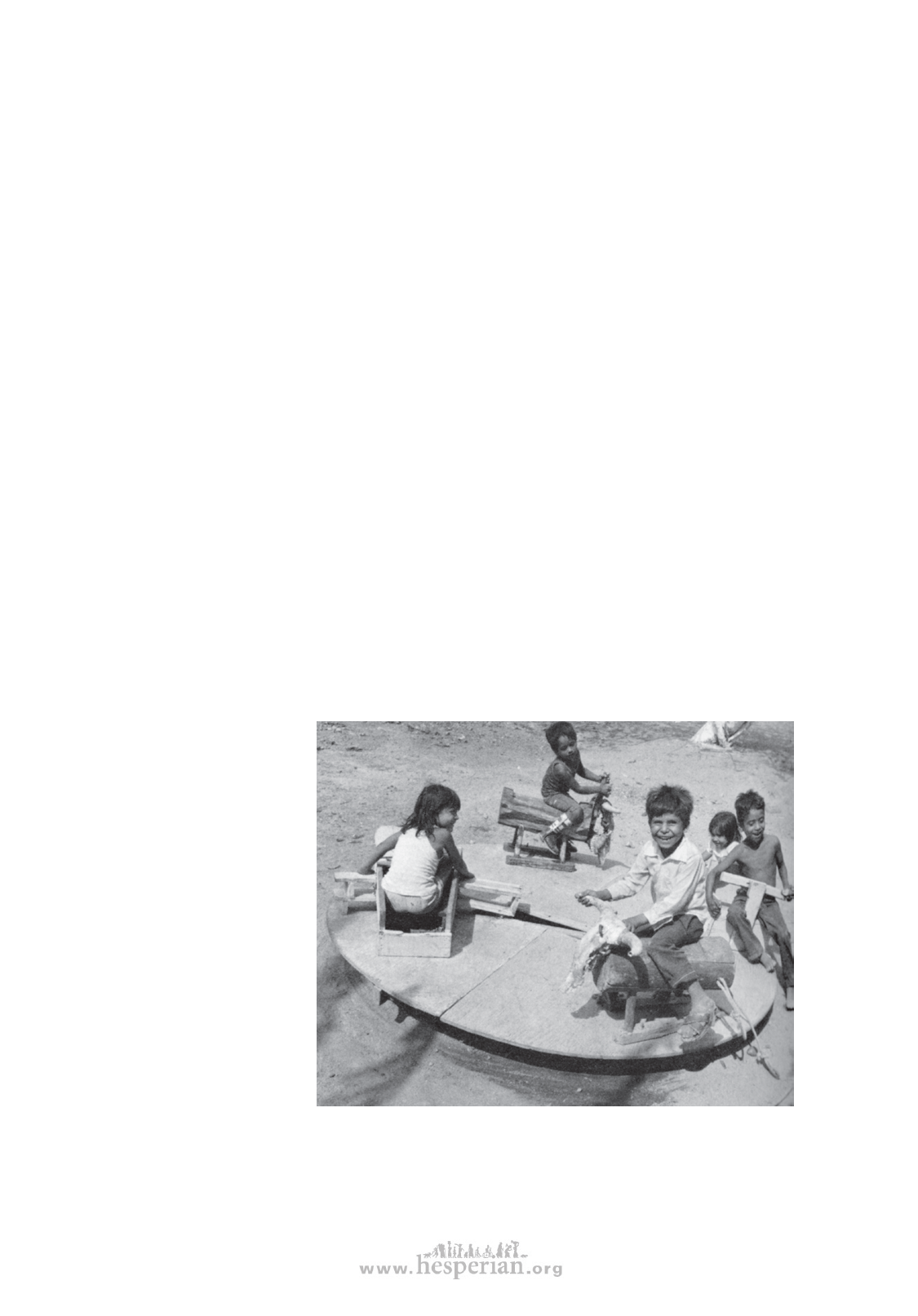
426 chapter 46
PRECAUTIONS AND SUGGESTIONS FOR A SUCCESSFUL
ALL-CHILDREN’S PLAYGROUND
1. Involve as much of the community as possible in building and maintaining the
playground.
2. Keep the playground simple and build it from local low-cost materials. Only this way
can it serve as a model for families of disabled children to build the most useful
equipment for their child in their own homes. Resist offers from the local mayor
or politicians to build an impressive metal frame playground. This will eliminate
community participation and makes the equipment too costly for poor families to
build at home.
3. For poles that are put into the ground, use a kind of wood that does not rot quickly.
Do not use preservatives. Most have toxic side effects that are likely worse than
any benefits.
To avoid accidents, check strength of poles frequently and replace them at regular
intervals—especially during the hot rainy season.
4. Swings can be hung from ropes or chains. Rope or vines are cheaper but may rot
or wear through fairly quickly. Plastic or nylon rope will not rot in the rains, but will
gradually grow brittle and weak with the sun. As with posts, to avoid accidents,
check the strength of ropes frequently by having several heavy persons hang on
them at one time. Replace ropes at regular intervals, before they get weak.
5. Regular maintenance of the playground is essential, and this will require planning
and organization. Perhaps once a month the village children can take an expedition
to cut new poles to replace rotting ones, to repair old equipment, and to build new.
Adult coordination of such activity is usually necessary.
6. To boost enthusiasm,
keep lists in a public
place of all the children
and adults who help
with the playground—
and put a star for each
time they help.
Children play on a
‘merry-go-round’ in
PROJIMO. Enclosed
‘cars’ protect more
severely disabled children.
A cow’s skull provides
handles for a rider.
Disabled village Children